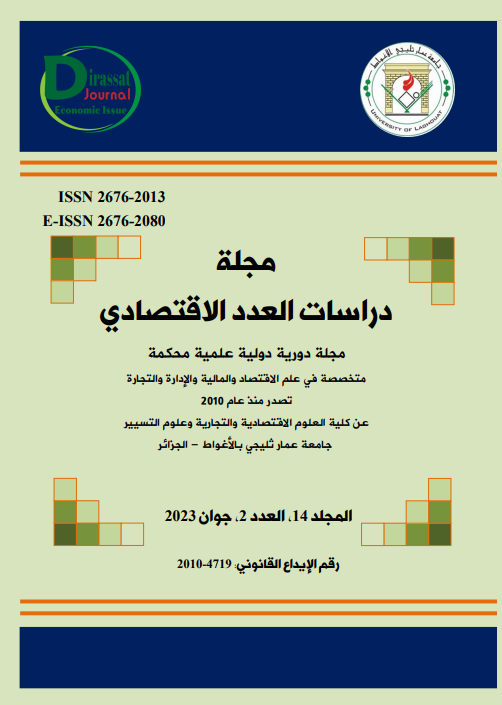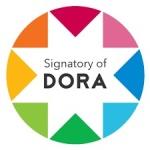E-recommendations and their contribution to shaping the attitude of the Algerian consumer towards national products: Source and Content as decisive factors
Abstract
This study aims to find out how electronic recommendations contribute to shaping the attitude of the Algerian consumer toward national products, especially by source and content, The theoretical aspect of the components of the proposed model for the study was discussed based on the Elaboration likelihood model (ELM), Sample of 390 individuals was adopted whose data could be analyzed to get many statistical indicators, The path analysis method was also used as one of the structural equation modeling methods SEM, for that, we used SPSS 26 and AMOS 24 programs, The results concluded The consumer looks at the data received from the source with a simple look (Peripheral route) depending on experience and similarity in an exploratory step, in contrast to the content data, in case of interest, he conducts an accurate analysis of the content by quality; Intensity, and trend according to the central route, which ends up creating a position that has a continuous impact on national products.
Downloads
References
ATIL, H. (2022). The effect of electronic word of mouth on the adoption of nationally manufactured products among Algerian consumer. PhD thesis. MEDEA, ALGERIA, MEDEA: Yahya Fares University.
- BENOIT, F., & al, &. (2011). Comportement du consommateur et publicité : attitude et persuasion. Dans Maxi-fiches de Communication Marketing (p. 158). france: DUNOD.
- BERRACHED, S., & CHERCHEM, M. (2020). the Electronic Word-of-Mouth’s influence on algerian consumer. Algerian Journal of Economy and Management, 14(1), 330-343.
- CHANG, C.-C., & CHIN, Y.-C. (2010). The impact of recommendation sources on online purchase intentions. World Academy of Science, Engineering and Technology, 4(6), 111-114.
- Chu Shu-Chuan. (2009). Determinants of consumer engagement in electronic word-of-mouth in social networking sites. thèse de doctorat,, pp25-26. Texas, The University of Texas at Austin, United States: Faculty of the Graduate School.
- HYRYNSALMI, S., SEPPÄNEN, M., AARIKKA-STENROOS, L., & al. (2015). Busting myths of electronic word of mouth: the relationship between customer ratings and the sales of mobile applications. Journal of theoretical and applied electronic commerce research, 10(2), 1-18. doi.org/10.4067/S0718-18762015000200002
- JAIN, P. K., YEKUN, E. A., PAMULA, R., & al, e. (2021). Consumer recommendation prediction in online reviews . Computers and Electrical Engineeringp. 107397, 95, 107397. doi.org/10.1016/j.compeleceng.2021.107397
- LEE, S.-H. (2009). How do online reviews affect purchasing intention?. African Journal of Business Management, 3(10), 576-581. doi.org/10.5897/AJBM09.204
- LI, J., & YANG, G. (2021). Network embedding enhanced intelligent recommendation for online. uture Generation Computer Systems, 119, 68-76.
- MERABET.Amina, & BENHABIB.Abderrezzak. (2019). Persuasive advertising effectiveness in Algeria :. Les Cahiers du MECAS, 15(02), 42.53. doi.org/10.1016/j.future.2021.01.017
- NASRI, W. (2011). Factors influencing the adoption of internet banking in Tunisia. International journal of business and management, 6(8), 143-160. doi:10.5539/ijbm.v6n8p143
- PETTY, R. E., BARDEN, J., & WHEELER, S. C. (2009). The elaboration likelihood model of persuasion. San Francisco: Jossey-Bass/Wiley.
- RACHERLA, P., & FRISKE, W. (2012). Perceived ‘usefulness’ of online consumer reviews: An exploratory investigation across three services categories. Electronic commerce research and applications, 11(06), 548-559. doi:10.2139/ssrn.2196873
- RAVULA, P., JHA, S., & BISWAS, A. (2022). Relative persuasiveness of repurchase intentions versus recommendations in online reviews. Journal of Retailing, 98(04), 724-740. doi.org/10.1016/j.jretai.2022.06.001
- SENECAL, S., & NANTEL, J. (2004). The influence of online product recommendations on consumers’ online choices. Journal of retailing, 80(02), 159-169. doi.org/10.1016/j.jretai.2004.04.001
- taber, K. (2018). the use of cronbach’s alphawhen developing and reporting research instruments in science education. research in science education, 48(06), 1273–1296. doi:10.1007/s11165-016-9602-2
- TAN, M., & TEO, T. S. (2000). Factors influencing the adoption of Internet banking. Journal of the Association for information Systems, 1(1), 1-41. doi:10.17705/1jais.00005
- YANG, T., YANG, F., & MEN, J. (2023). Recommendation content matters! Exploring the impact of the recommendation content on consumer decisions from the means-end chain perspective. International Journal of Information Management, 68(10). doi:10.1016/j.ijinfomgt.2022.102589
- ZHANG, N., CAMPO, S., JANZ, K. F., & al. (2013). Electronic word of mouth on twitter about physical activity in the United States: exploratory infodemiology study. Journal of medical Internet research, 15(11), e261. doi:10.2196/jmir.2870
Copyright (c) 2023 هارون عطيل, وسام حسيني, حمزة بن عروس

This work is licensed under a Creative Commons Attribution-NonCommercial 4.0 International License.
















